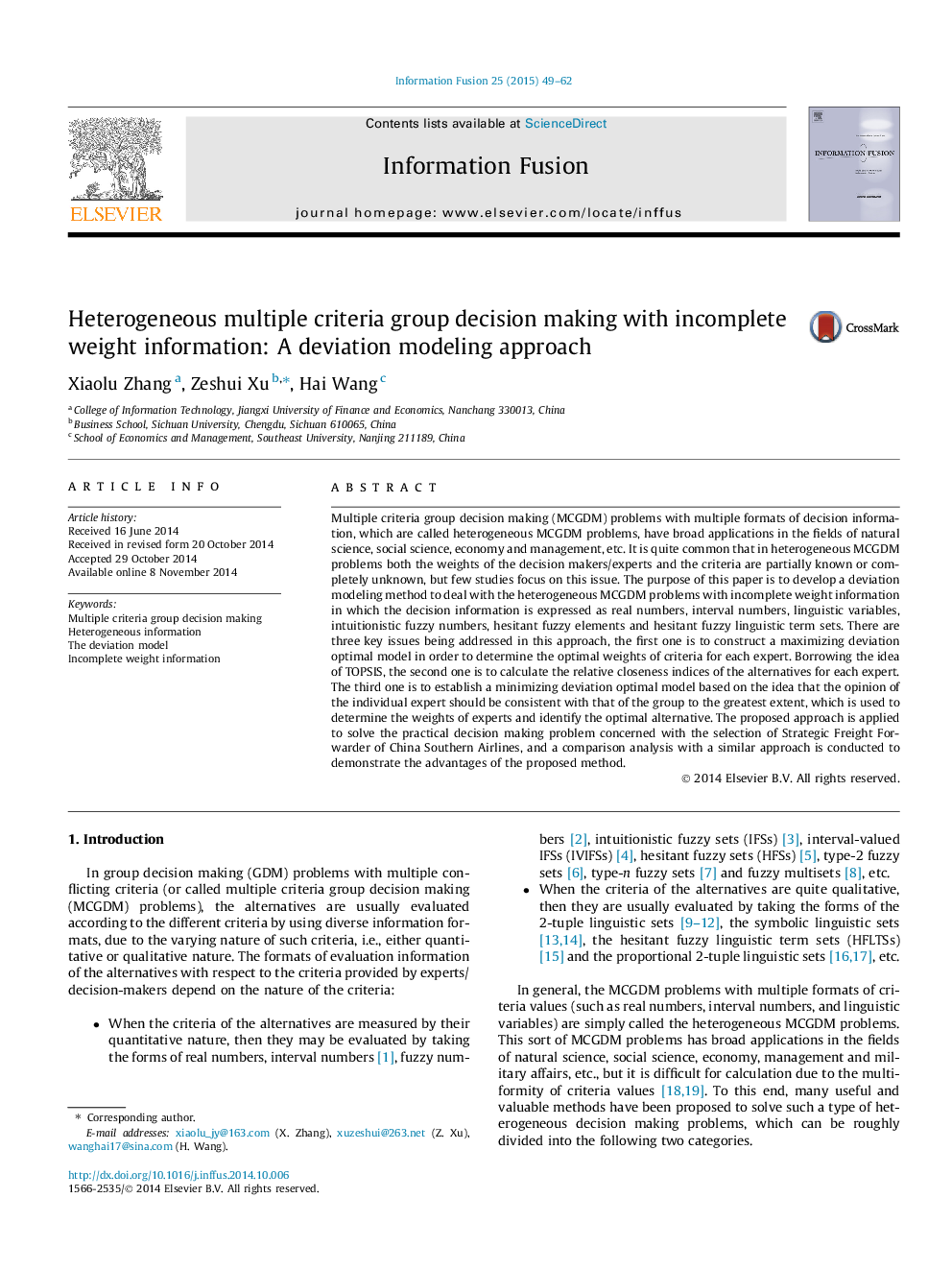| Article ID | Journal | Published Year | Pages | File Type |
|---|---|---|---|---|
| 528426 | Information Fusion | 2015 | 14 Pages |
•We present a method based on the distances to the ideal solutions to manage the heterogeneous decision data.•We construct a maximizing deviation model to determine the optimal weights of criteria for each expert.•We establish a minimizing deviation model to determine the weights of experts and identify the optimal alternative.
Multiple criteria group decision making (MCGDM) problems with multiple formats of decision information, which are called heterogeneous MCGDM problems, have broad applications in the fields of natural science, social science, economy and management, etc. It is quite common that in heterogeneous MCGDM problems both the weights of the decision makers/experts and the criteria are partially known or completely unknown, but few studies focus on this issue. The purpose of this paper is to develop a deviation modeling method to deal with the heterogeneous MCGDM problems with incomplete weight information in which the decision information is expressed as real numbers, interval numbers, linguistic variables, intuitionistic fuzzy numbers, hesitant fuzzy elements and hesitant fuzzy linguistic term sets. There are three key issues being addressed in this approach, the first one is to construct a maximizing deviation optimal model in order to determine the optimal weights of criteria for each expert. Borrowing the idea of TOPSIS, the second one is to calculate the relative closeness indices of the alternatives for each expert. The third one is to establish a minimizing deviation optimal model based on the idea that the opinion of the individual expert should be consistent with that of the group to the greatest extent, which is used to determine the weights of experts and identify the optimal alternative. The proposed approach is applied to solve the practical decision making problem concerned with the selection of Strategic Freight Forwarder of China Southern Airlines, and a comparison analysis with a similar approach is conducted to demonstrate the advantages of the proposed method.
